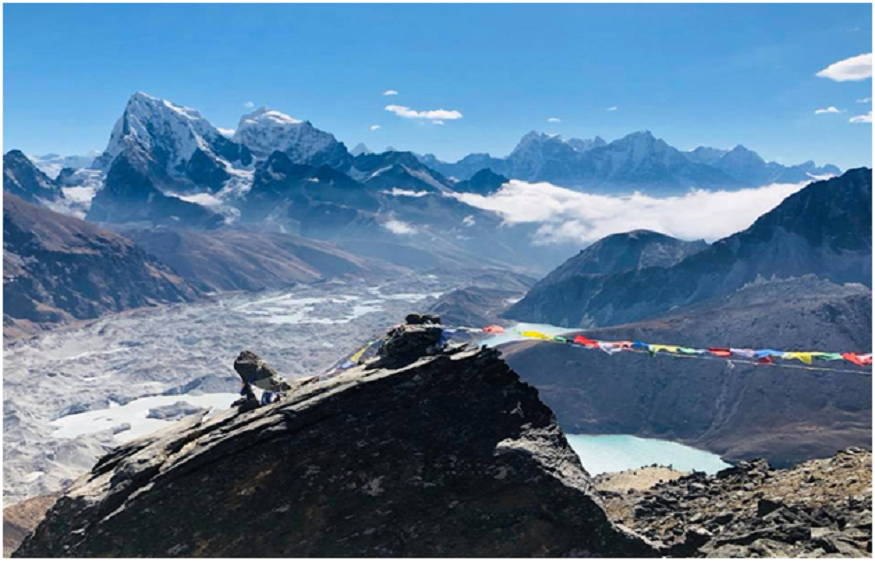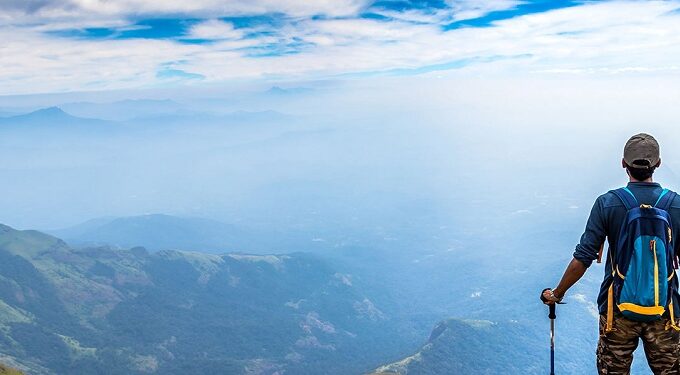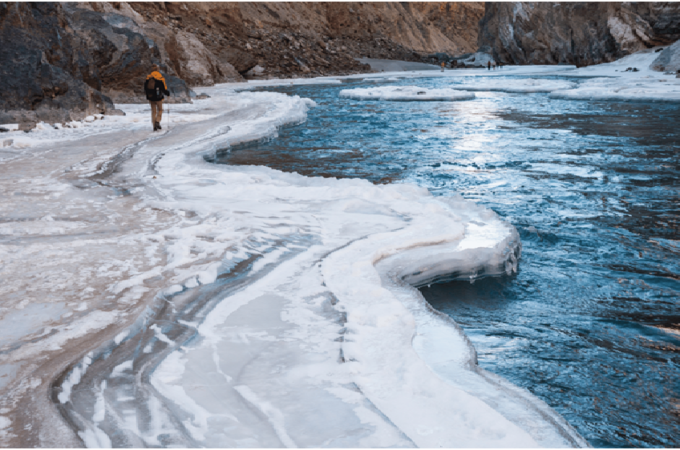
Best of Nepal: Top-Ranked Treks Across Continents
Nepal, the arrival of taking off Himalayan peaks, antiquated trails, and dynamic societies, is a trekker’s heaven that proceeds to pull in explorers from each corner of the globe. From tough high-altitude courses to gentler social strolls, Nepal’s trekking alternatives are as different as its scenes. Among its most famous ventures are the Everest Base Camp short trek, Langtang trek, Manaslu Trekking, and Mardi Himal trek — each advertising a one of a kind mix of nature, culture, and challenge. These treks are not fair neighborhood favorites but have earned acknowledgment over landmasses, included in worldwide trekking records and rousing incalculable travelers to encounter the grandness of the Himalayas firsthand.
Overview
Nepal’s trekking trails are more than fairways driving through the mountains—they are ageless courses that weave together characteristic magnificence, otherworldly legacy, and human versatility. Whether it’s the amazing strides to Everest Base Camp, the quiet valleys of Langtang, the inaccessible wild of Manaslu, or the recently well known Mardi Himal course, each trek gives something particular. A few are more available and shorter, perfect for those on restricted plans, whereas others extend into inaccessible, untouched regions idealize for the prepared trekker looking for isolation and challenge. As tourism in Nepal has developed, these treks have kept up their substance, giving improving encounters established in the country’s antiquated conventions and marvelous geography.
Everest Base Camp short Trek
The Everest Base Camp short trek condenses the classic Everest involvement into a more reasonable time allotment, frequently completed in around 10 to 12 days. This trek ordinarily starts with a emotional flight into Lukla and at that point takes after the Dudh Koshi Stream valley up through famous Sherpa towns like Namche Bazaar, Tengboche, and Dingboche, some time recently at long last coming to the base camp at 5,364 meters. Trekkers get a close-up see of compelling Everest, along with Lhotse, Nuptse, Ama Dablam, and other monsters. The course is lined with supplication wheels, shuddering supplication banners, mani stones, and Buddhist cloisters, making it a social as well as a beautiful travel. In spite of the shorter term, it holds all the key highlights of the classic trek, advertising high-altitude experience with fulfilling sees at each step.
Langtang Trek
The Langtang trek is a covered up jewel, frequently less swarmed than the Everest or Annapurna districts, making it a culmination for trekkers looking for peace and genuineness. The travel ordinarily begins from Syabrubesi, a few hours’ drive from Kathmandu, and takes after the Langtang Khola through thick woodlands, elevated knolls, and glacier-fed waterways. Trekkers pass through Tamang and Sherpa towns such as Llama Inn and Langtang Town, in the long run coming to Kyanjin Gompa, a lovely cloister town encompassed by peaks like Langtang Lirung. The seismic tremor of 2015 hit this region difficult, but the region has since recouped and revived with strength and trust. With staggering views, warm neighborliness, and less foot activity, Langtang offers an exceptional Himalayan experience.
Manaslu Trekking
Manaslu Trekking is an off-the-beaten-path elective to the more commercialized courses, circling the magnificent Mount Manaslu, the world’s eighth-highest mountain. The circuit ordinarily starts in Soti Khola and winds through subtropical woodlands, profound stream valleys, and snow capped scenes to the Larkya La Pass at 5,160 meters. It passes through conventional towns affected by Tibetan culture, such as Samagaon and Samdo. The region as it were opened to trekking in the 1990s, and due to its confined zone status, an extraordinary permit is required, which makes a difference to protect its inaccessible character. The trek offers crude common magnificence, social submersion, and a high-mountain pass that rivals any in the Himalayas, making it a top-ranked trek for prepared adventurers.
Mardi Himal Trek
The Mardi Himal trek is a more up to date and progressively prevalent trek in the Annapurna region, advertising a calmer, less swarmed elective with breathtaking sees of Machapuchare (Fishtail), Annapurna South, and Hiunchuli. The course ordinarily starts in Kande or Phedi and climbs through lavish rhododendron woodlands to snow capped glades and eventually Mardi Himal Base Camp at around 4,500 meters. It’s perfect for trekkers who need a short however marvelous trek with an emotional view. Along the way, you pass charming Gurung towns and ridge-top lodges, giving you a sense of both remoteness and association. Mardi Himal’s excellence lies in its straightforwardness, making it a favorite among picture takers and nature lovers.
Major Stops Along These Treks
Each trek has its claim paramount waypoints. For the Everest Base Camp short trek, highlights include Lukla, Namche Bazaar, Tengboche Religious community, Dingboche, and Everest Base Camp. Langtang trek stops incorporate Syabrubesi, Llama Inn, Langtang Town, and Kyanjin Gompa. In the Manaslu region, key areas are Soti Khola, Machha Khola, Samagaon, Samdo, and Larkya La Pass. The Mardi Himal trek highlights Australian Camp, Woodland Camp, Moo Camp, Tall Camp, and the Mardi Base Camp. These towns and stops not as it were give rest and convenience but are social touchpoints advertising neighborhood nourishment, conventions, and warm hospitality.
Routes and Highlights for These Treks
The Everest Base Camp short trek takes after a well-trodden way with extraordinary snow capped view, emotional mountain sees, and notorious areas like the Khumbu Icy mass and Kala Patthar. The Langtang course takes trekkers through waterway valleys, bamboo and pine woodlands, and offers a chance to spot ruddy pandas and other natural life. The Manaslu Circuit course takes you around an enormous mountain run, through distinctive climate zones and over one of the most breathtaking tall passes in Nepal. Mardi Himal’s highlight is strolling along an edge with unhindered sees of the Annapurna Massif, regularly over the clouds, advertising a sense of strolling on air.
Best Time
The best time to trek these courses is amid the two primary seasons: spring (March to May) and harvest time (September to November). Spring brings blooming rhododendrons and hotter days, whereas harvest time offers clear skies, steady climate, and shocking skies. Winter treks are conceivable for Mardi Himal and parts of Langtang with arrangement, but higher elevation passes like Larkya La in Manaslu or Everest Base Camp can end up unsafe with snow. Storm (June to August) is by and large debilitated due to overwhelming downpours and avalanches, in spite of the fact that Manaslu’s rain-shadow region can still be investigated with caution.
Nature and Landscape of These Treks
Nepal’s normal differing qualities are on full show in these treks. The Everest region highlights towering peaks, ice sheets, and elevated tundra, whereas Langtang is wealthy with woodlands, waterfalls, and good country pastures. Manaslu trekking navigates shifted landscapes from lavish green valleys to desolate, high-altitude regions. Mardi Himal is a blend of wilderness, rhododendron woods, and ridge-line climbing. These courses offer a momentous extent of environments and view in a generally little geographic region, making Nepal a special trekking goal. From ruddy pandas in Langtang to the yak pastures of Manaslu and the frigid vistas of Everest, nature here is both assorted and dramatic.
Fitness and Difficulty
All of these treks require a direct to tell level of physical wellness, in spite of the fact that each shifts in trouble. The Everest Base Camp short trek and Manaslu Trekking are more requested due to their tall elevation and longer terms. Langtang trek is direct, with unfaltering rise pick up and available trails. Mardi Himal is generally short but incorporates a few soak areas. Height ailment can be a concern, particularly over 3,000 meters, so acclimatization is pivotal. Earlier climbing encounters are supportive but not required if you’re sensibly fit and well-prepared with legitimate adapt and pacing.
Culture of Nepal
Culture is an indivisible portion of the trekking encounter in Nepal. You’ll experience warm neighborliness, centuries-old cloisters, vacillating supplication banners, and otherworldly chants resounding through the valleys. The Sherpas of the Everest region, Tamangs of Langtang, Gurungs in Mardi Himal, and Tibetan-influenced communities in Manaslu all offer a window into Nepal’s wealthy legacy. You might connect a town celebration, test conventional dal bhat or tsampa, and witness the everyday customs of mountain life. Trekking here is not a physical journey but moreover a significant social investigation of Nepal’s otherworldly and communal heart.
Packing List
When pressing for these treks, fundamentals incorporate quality trekking boots, layered clothing for temperature changes, a down coat, warm base layers, a waterproof coat, gloves, warm cap, sunhat, shades, sunscreen, water refinement tablets, and a great resting sack. Don’t disregard a headlamp, trekking shafts, fundamental first-aid, individual drugs, and a control bank for charging. For higher treks like Everest and Manaslu, hotter equipment is fundamental. Lightweight is key—pack savvy, not overwhelming. Too, carry cash (Nepali rupees) since ATMs are uncommon along the trails.
Tips for Making Easy Tour
To make your trek smoother, prepare at least a month some time recently with cardio, stairs, and light climbing. Acclimatize properly—don’t surge and take after the guide’s pace. Hydration is crucial; drink a bounty of water. Select a dependable trekking office or direct, particularly for farther treks like Manaslu. Continuously check climate upgrades and pack appropriately. Regarding neighborhood customs—dress unassumingly, inquire some time recently of shooting individuals, and take after “leave no trace” standards. Finally, travel protections that cover high-altitude trekking are fundamental for security and peace of mind.
Conclusion
Nepal’s treks have become worldwide favorites since they combine unmatched normal magnificence with honest to goodness social experiences. Whether you’re taking after the noteworthy path to Everest Base Camp, finding isolation in Langtang’s valleys, circumnavigating the forceful Manaslu, or seeing dawn over Mardi Himal’s ridgelines, each travel clears out an enduring impression. These are not fair treks—they are transformative experiences that interface you to the soil and to yourself. From tenderfoots to prepared climbers, Nepal offers a path for everyone.
FAQs
1. Do I require grants for these treks?
Yes. For Everest and Langtang, you require a TIMS card and national stop passage licenses. Manaslu requires a limited region permit, MCAP, and ACAP. Mardi Himal requires ACAP and TIMS.
2. Is it secure to trek solo?
Whereas solo trekking is conceivable in a few districts, enlisting a direct is unequivocally prescribed, particularly for Manaslu (where it’s required) for both security and social insights.
3. What is the normal toll of these treks?
Costs shift. Everest and Manaslu are for the most part more costly due to licenses and coordinations, averaging $1,200–$2,000. Langtang and Mardi can be done more affordably, from $700–$1,200.
4. Can apprentices do these treks?
Yes, particularly Langtang and Mardi Himal. With arrangement and a direct, indeed Everest and Manaslu are achievable for decided first-timers.
5. How tall do these treks go?
Everest Base Camp goes up to 5,364 m, Manaslu’s Larkya La is 5,160 m, Langtang Kyanjin Gompa is around 3,870 m, and Mardi Himal Base Camp comes to 4,500 m.
Contact Us
The Nepal Trekking Pvt. Ltd.
Mobile : +977-9841273869
Email: [email protected]
URL:-https://thenepaltrekking.com/


